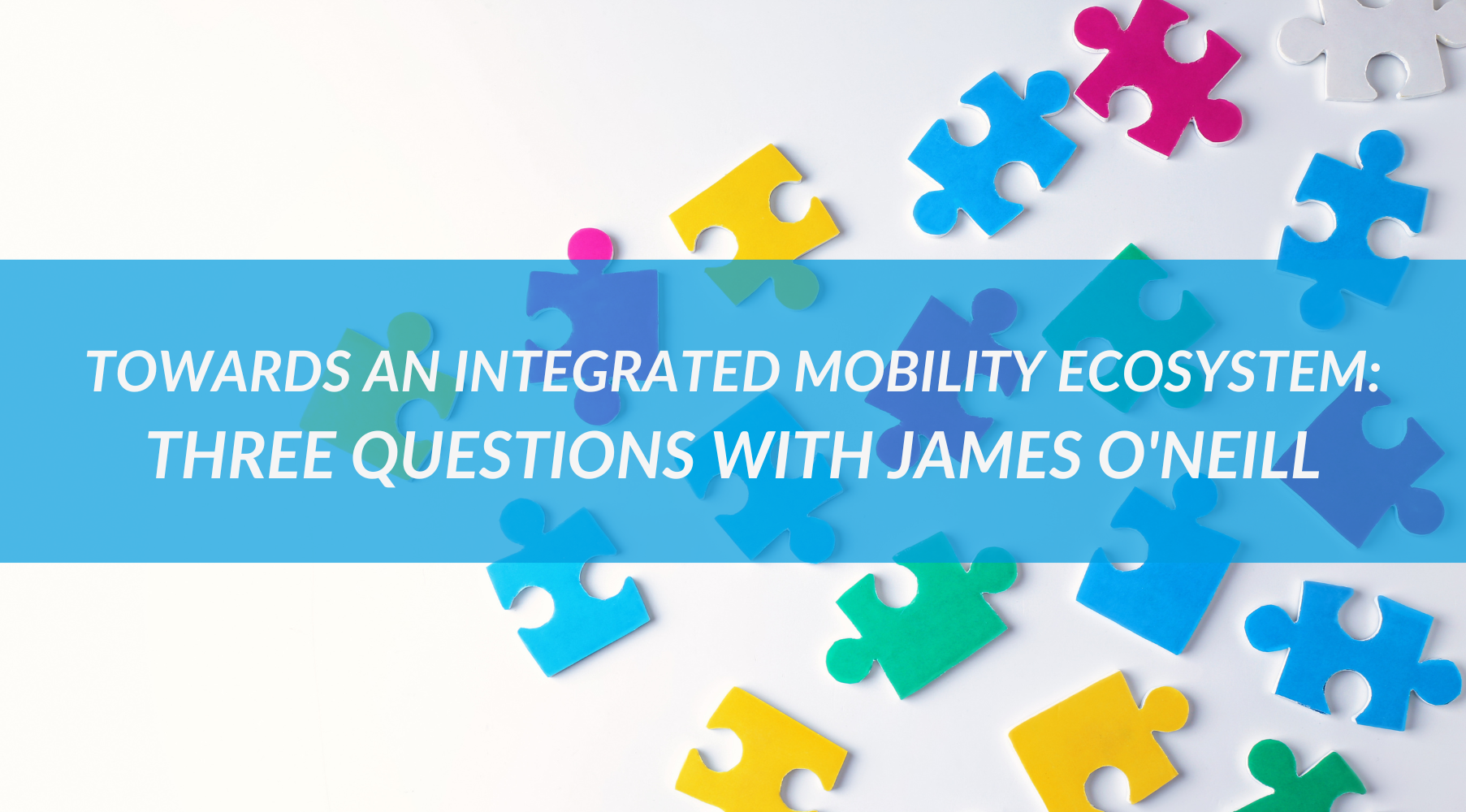Jun 12, 2023 Three Questions with James O'Neill
By Ben Heller
What will it take to build an integrated mobility ecosystem:
Three questions with James O’Neill
Last week I sat down with James O’Neill, Mobility Consultant, to discuss the transformation towards automating systems, workflows, and vendor management in the mobility industry – where we’re at in the process and what it will take for companies to achieve a fully integrated mobility ecosystem.
Though the mobility industry has been talking about a “tech revolution” for years, it’s only the most bleeding-edge corporations that have achieved fully integrated mobility technologies. Having built numerous innovative mobility solutions for major companies, I wanted to check in with James for his perspective on what it’s going to take to achieve a true mobility ecosystem for everyone – that Jetsons-like utopia of the future.
Here are some of the highlights from our conversation. You can also watch to the full interview here.
How is mobility evolving and where are mobility managers steering their programs toward today?
I think this can be addressed from two directions. One would be from a program or policy standpoint, specifically around the lump sum approach that everyone’s familiar with. Mobility line managers love the black and white certainty of lump sums because they know exactly how much a move is going to cost, so I think there’s opportunity to expand lump sum offerings to a broader range of employees, maybe even all the way to the C-Suite. Employees also generally like the sense of choice that a lump sum relocation provides because it allows them to evaluate their own life situation and prioritize their spend accordingly.
From a delivery and administration standpoint, I think companies are starting to see what this idea of a mobility ecosystem could be: a complete digital integration of HRIS system that pulls everything together – mobility vendors, tax, immigration, RMCs – into one data hub that allows internal stakeholders to own all the functions relative to their transferees. That would be a really big lift for a lot of companies, and it feels like that’s the next big step we’re all collectively taking in this industry. The transition to this kind of ecosystem is going to require both tech solutions and policy changes.
What are the common pitfalls that mobility should be looking at when embarking on this kind of transformation?
Keep it simple. You can very quickly get into the weeds with these processes, so it’s critical for companies to make sure they’re clear on the vision for their mobility ecosystem. What am I building? What is my goal? Who is going to be in this ecosystem? At the root will be a technology vendor that will implement the system, so communication is key to the successful integration of all your various sub-vendors and service providers. If you’re not clear on your vision or how all those pieces need to connect at the outset, the project will take much more time and cost a lot more.
Think through your typical information flow on a relocation, how it’s initiated and who's involved, how updates to a file are managed and communicated. In a world without a tech ecosystem, that’s an email. But since we know that you rarely initiate a relocation with every single piece of information you’re going to need, your technology must be integrated to automate that process for you. You need to think through all the steps, identify the important milestones and how the system can communicate these, so you know everything is moving in the direction you’ve designed.
Do you think companies need to run an RFP to be successful? And if so, what are the key things to evaluate to ensure a successful transformation to this ideal future state?
This is not a vendor relationship that I would ever suggest entering without a full and robust RFI and RFP because of the incredible amount of detail involved. You need to make sure you’re asking your potential vendors about their integration work specifically, what experience they have building out integrations with your specific HRIS, applicant tracking, immigration, and tax systems.
Equally important is system implementation, because even if a technology firm has great systems and offers great solutions, they might not have a strong project management or implementation group. That said, just because a vendor can’t support your needs at a certain level that doesn’t mean they’re not the right vendor. Sometimes companies need to engage a third party to help with the project management to help with implementation. Your RFI and RFP processes are going to help with that discovery. Every mobility program is different, and a lot of these types of projects never really achieve the goal that anyone had in mind at the outset – and that’s okay.
***
For us at PricePoint, it’s incredibly fulfilling to see clients gain efficiencies with technology to build an improved move pricing process. We represent just one component in global mobility, but it is exciting to be a part of conversations like this and think about the potential of what a fully integrated, robust mobility ecosystem could do for the clients we serve. More and more companies are testing different tech and adding these to their workflow, and I have no doubt that one day we’ll get there together.
If you or your company could use some guidance on your HHG moving program, we’re happy to help. PricePoint works with more than 1,000 movers worldwide, giving us unparalleled objective data insights and RFP expertise. We can help you get what you need out of your moving supplier relationships. Reach out anytime, I’d love to connect.
CEO Ben fell in love with the mobility industry while running Accentureʼs global mobility consulting practice. Focusing on the mobility supply chain, he learned the hard way that move pricing is complicated, unclear, and vulnerable to manipulation. After evaluating all existing alternatives, Ben partnered with Ryan to make data-driven moving decisions possible.

